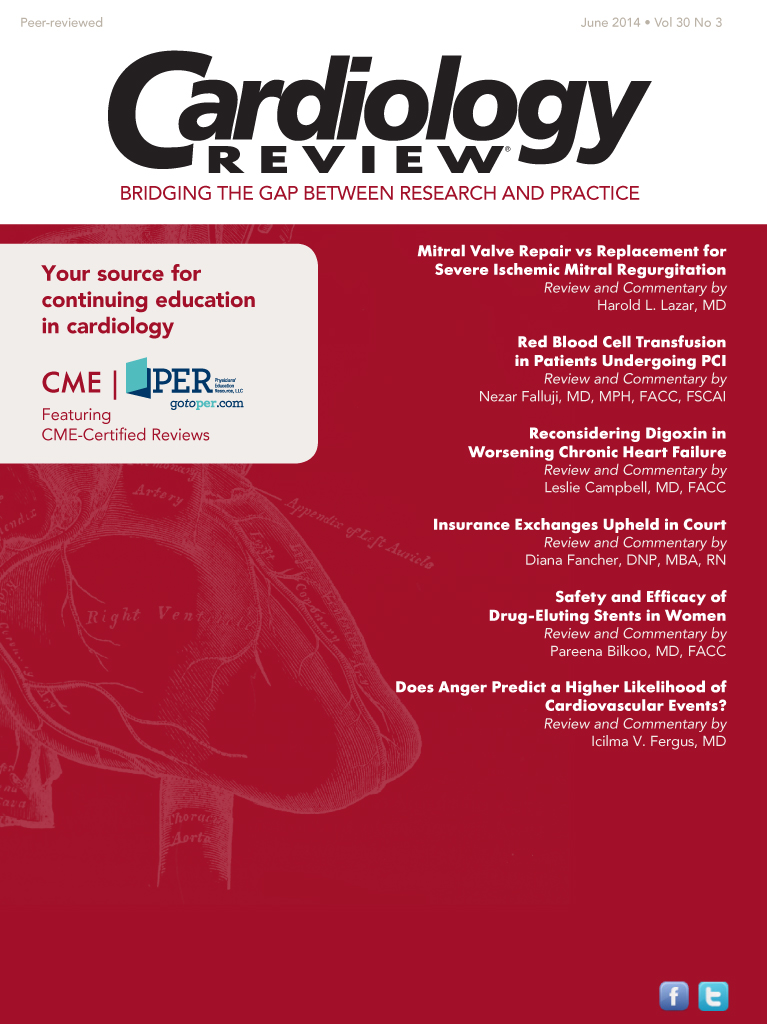Publication
Article
Cardiology Review® Online
Addressing Childhood Obesity in the United States
Author(s):
It is primarily the responsibility of parents, teachers, and health care professionals to be role models for the younger generation with respect to healthy eating and physical activity.

Aparna M. Bhagavat, MD, FACC
“Let’s Move” is an excellent program spearheaded by First Lady Michelle Obama with the goal of tackling the problem of childhood obesity within a generation. This program was launched in February 2010 to increase the awareness among parents, caregivers, schools, and the general public about the serious problem of childhood obesity. The prevalence of childhood obesity has more than doubled and quadrupled in adolescents over the past 30 years.1 The prevalence of obesity in children between the ages of 6 and 11 years has increased from 7% in 1980 to 18% in 2012, and has increased from 5% to 21% in adolescents between the ages of 12 and 19 years.1
Although the prevalence of obesity provides us with information about the burden presented by the problem, understanding the incidence of obesity helps educate us about when new cases of obesity occur, and offers possible avenues of intervention. In their study of elementary school children in the Early Childhood Longitudinal Study—kindergarteners in 1998—Cunningham and colleagues at Emory University2 found that incident obesity is highest at the kindergarten age; they further noted that the annual incidence of obesity is much higher among overweight children compared with normal-weight children (19.7% incidence in overweight kids vs 2.4% in normal-weight kids). Dietary habits very early in life are linked to body mass index, with a resultant increase in the incidence of obesity.3 Cunningham et al also showed that babies who were greater than 4 kg at birth had a higher prevalence of obesity at all ages.2 Yet another study has shown that both low birth weight (less than 2.5 kg) and high birth weight (greater than 4.5 kg) have been associated with type 2 diabetes.4 In addition, there is evidence that rapid weight gain early in life (in the first 2 weeks of life after birth) was associated with endothelial dysfunction at up to 16 years of age or later.5 Thus it appears that in addition to educating children at schools, a greater amount of attention and education should be offered to parents and caregivers.
“Let’s Move” has 5 concrete goals6:
- Create a healthy start for children
- Educate parents and caregivers about healthy foods
- Substitute healthy foods in schools
- Provide access to healthy food at affordable prices
- Promote and encourage increased physical activity
The New York Times
Parents, caregivers, schoolteachers, health care professionals, and government officials play a significant role in achieving these goals. There is a need to add educational classes about diet and nutrition and exercise to the school curriculum. Providing educational materials to parents will play a pivotal role in lowering the prevalence and incidence of obesity. The steep increase in the consumption of sodas by youngsters prompted an op-ed article in in February 2010, “A Sin We Sip Instead of Smoke?”, which asks, “Is soda the new tobacco?”7 In conjunction with the Let’s Move initiative, steps were taken by government agencies to prohibit candy and sugar-sweetened beverages in schools.
The enormous burden of childhood obesity not only has impact in adulthood but also leads to numerous health and psychosocial problems in childhood. The medical complications during childhood are type 2 diabetes, hypertension, sleep apnea, asthma, and early puberty, including polycystic ovarian disease and menstrual irregularities.8 Unfortunately, the psychosocial problems related to childhood obesity, which are significant, are often overlooked: poor self-confidence and depression, which frequently result in poor interpersonal relations and overall poor grades in school.9
 
It is primarily the responsibility of parents, teachers, and health care professionals to be role models for the younger generation with respect to healthy eating and physical activity. The future of our children is at stake. The key to solving this problem is to continue to promote education through research, publications, and public media.
References
JAMA.
1. Ogden CL, Caroll MD, Kit BK, Flegal KM. Prevalence of childhood and adult obesity in the United States, 2011-2012. 2014;311:806-814.
N Engl J Med
2. Cunningham SA, Kramer MR, Narayan KMV. Incidence of childhood obesity in the United States. . 2014:370:403-411.
Arch Pediatr Adolesc Med.
3. Baidal JA, Taveras EM. Childhood obesity: shifting the focus to early prevention. 2012:166:1179-1181.
Am J Epidemiol
4. Harder T, Rodekamp E, Schellong K, Dudenhausen JW, Plagemann A. Birth weight and subsequent risk of type 2 diabetes: a meta-analysis. . 2007;165:849-857.
Circulation
5. Singhal A, Cole TJ, Fewtrell M, Deanfield J, Lucas A. Is slower early growth beneficial for long-term cardiovascular health? . 2004;109:1108-1113.
6. Let’s Move website. About Let’s Move! http://www.letsmove.gov.
New York Times,
7. Bittman M. Soda: a sin we sip instead of smoke? February 13, 2010.
Circulation.
8. Lakshman R, Elks CE, Ong KK. Childhood obesity. 2012;126:1770-1779.
Arch Dis Child.
9. Reilly JJ, Methven E, McDowell ZC, et al. Health consequences of obesity. 2003;88:748-752.





